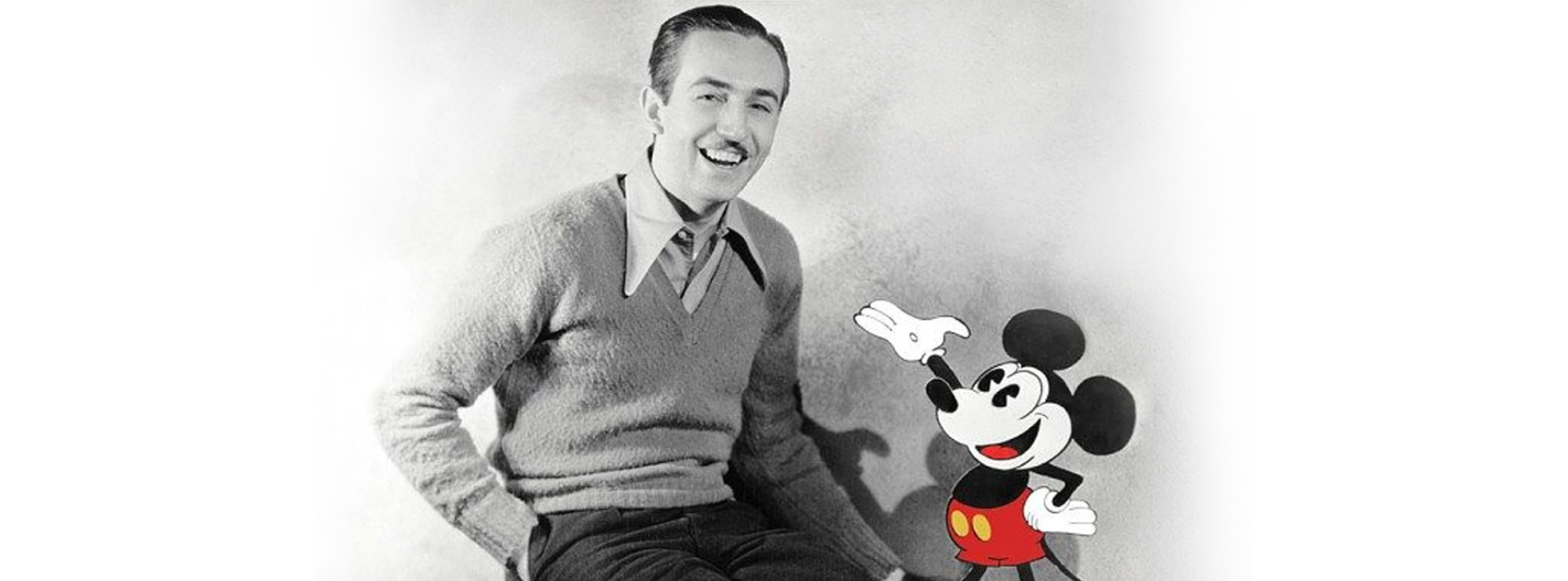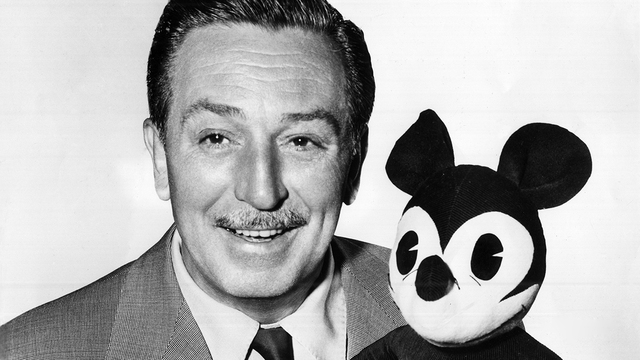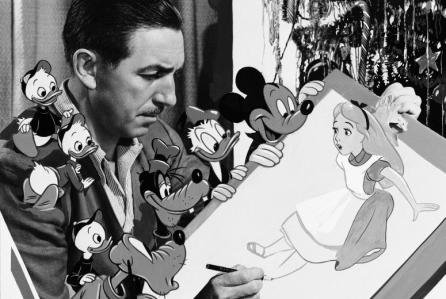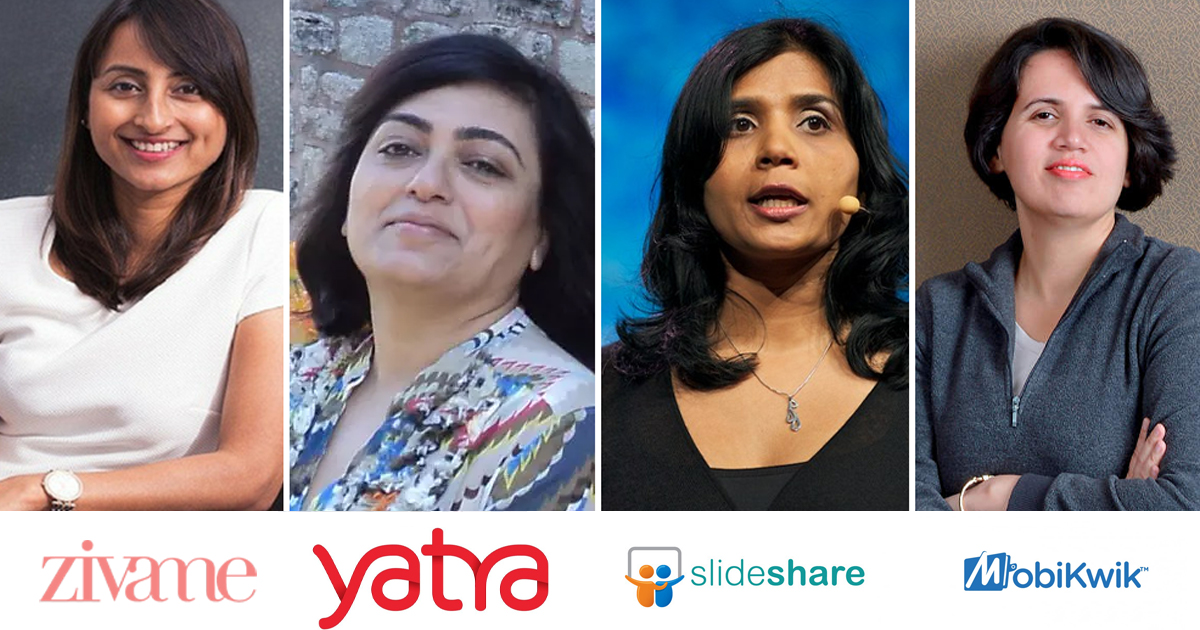Entrepreneur Stories
Walt Disney: A Journey Into The World Where Dreams Come True
Published
6 years agoon

Have you ever had dreams, but not the courage to turn the dreams into magical reality? Have you ever had a desire so strong, but not the drive to turn this into something beautiful? Had Walt Disney been like you or me, we would most definitely not have the glorious world of Disney today.
Walt Disney’s early life

Walt Disney’s early childhood was nowhere close to being as rosy and colourful as the movies he made later on in life. Born in Chicago to Elias Charles Disney and Flora Call Disney, Walt’s childhood was interrupted when the family had to move to Missouri first and then Kansas. With barely any money to spare, the Disney brothers had to work several odd jobs to make ends meet, a task which left them with little to no time for school.
The big change to Walt’s life came in the form of the Great War. A patriot by birth, Walt immediately joined the army, but was rejected because he was only a mere boy of 16. However, he finally became a part of the army by driving an ambulance bus! Through his time in the war, he realised his true passion lay in the magical world of theater, acting and drawing!
Walt Disney and the beginning of his career

The war had a great impact on Walt’s life. So great that the first caricatures he drew were of political figures, a feat which was clearly not a good idea! One of Walt’s brothers, Roy, was the first man who introduced him to the world of cartoons, mystery and beauty! In July 1923, Walt sold his camera, his creations and his hard work and moved to Hollywood. Once he reached, he moved in with his uncle Robert Disney and set out to look for a job. Unfortunately, no one believed in Walt’s dreams of becoming a director and as a result, every studio turned him down!
The first seeds for Disney were sown when Walt, Roy and Ub Iwerks (an artist) came together to form the first version of Disney. Called the Disney Brothers’ Studio, this company became home to the many creations for which Walt became famous. It was only after multiple rejections that Walt decided to turn to animation. The first success for Walt came in the form of a series called Alice Comedies, or what is now popularly known as Alice In Wonderland. The massive success of the Alice series resulted in the creation of a new project called Oswald the Lucky Rabbit and from then onward, there was absolutely no looking back for Walt!
The creation of Mickey Mouse

Despite the massive success of Oswald, Walt was not happy. He needed a character that was sympathetic, personal and full of potential. An idea was slowly brewing in this creative man’s head and slowly, after months of contemplation, the character of Mickey Mouse came to be! This particular character had a live voice, a back story and a dream with which everyone could relate. With such a specific idea for Mickey Mouse, Walt could not find a specific voice to fit this character. Despite several auditions, no one made the right impact and after several failed attempts, the creator decided to voice the character himself! Did you know that when Walt first came up with the idea of Mickey Mouse, he wanted to name him Mortimer Mouse? How weird was that?
In the year 1932, Walt discovered a new invention in the form of technicolour while working on a project called Flowers and Trees (a part of the Silly Symphony series.) With the brilliant idea of reshooting the project with this technology, Walt created the first ever successful animated series for Disney! Nothing could stop Walt after this success and post that, his touch was like the mythical Midas touch!
At the age of 62, Walt had amassed over 31 Academy Awards and was famous for creating not only amazing cartoons, but also for making brilliant feature films. When he passed away on the 15th of December, 1966, the world fell silent. Having lost a wondrous and extremely talented man, Walt’s death was a loss not many could bear with. One of the reasons his legacy still lives on is because it was a story of success, hard work, patience and perseverance. What is your favourite Disney story? Comment and let us know!
You may like
Entrepreneur Stories
Inside T-Hub: India’s Launchpad for Innovation and Entrepreneurship
Published
1 day agoon
May 8, 2024
Imagine a building that’s not just a structure but a buzzing ecosystem. A space where startups, corporations, universities, and investors come together to create the future. This isn’t science fiction; it’s T-Hub, India’s largest innovation hub, and it’s rewriting the rules of entrepreneurship.
T-Hub isn’t just about workspaces. It’s a launchpad for ambitious dreams. They’ve empowered over 2,000 startups, turning ideas into thriving businesses. Think funding woes? T-Hub’s got your back, connecting entrepreneurs with angel investors and government grants. Need a mentor to guide you through the rough patches? T-Hub boasts a network of 2,000 mentors ready to share their wisdom.
T-Hub’s vision extends beyond startups. Here’s a glimpse into what makes T-Hub special:
- From Seed to Scale: Whether you’re a budding entrepreneur with a bright idea or a scaling startup ready to take on the world, T-Hub has programs to support you. From the “seed-accelerator stage” Lab32 program to the “early-stage technology startups” RubriX program, T-Hub provides the tools and guidance needed to thrive.
- Corporate Muscle: Innovation isn’t just for startups. T-Hub bridges the gap between startups and established corporations like Facebook, Uber, and Boeing. This collaboration allows startups to tap into corporate expertise and resources, while corporations benefit from the agility and fresh perspectives that startups bring.
- Funding Powerhouse: T-Hub is more than just an idea incubator; it is also a reality maker. Through initiatives like T-Angel and the Digital India Scaleup Program, T-Hub connects startups with high-net-worth individuals, angel investors, and government funding sources.
- Global Ambitions: Thinking Beyond Borders? T-Hub has you covered. With partnerships across the globe, from the UK government to La Trobe University, T-Hub helps Indian startups access international markets and provides foreign startups with a foothold in India.
And it doesn’t stop there. T-Hub 2.0, their new colossal campus, is a testament to their ambition. This behemoth is not just the world’s largest technology incubator; it’s a microcosm of innovation itself. Universities find a home here, churning out future tech leaders. Foreign partnerships open doors to international markets for Indian startups. It’s a melting pot of ideas, cultures, and expertise, all focused on creating a brighter tomorrow.
T-Hub’s story is far from over. They’re aiming to empower a staggering 20,000 startups in the next five years. With their focus on internationalization and capacity building, they’re poised to become a global hub for innovation. So, if you’re an entrepreneur with a dream, T-Hub might just be the launchpad that takes you to the stars.

The workplace has undergone massive changes in the last century. At the turn of the Industrial Revolution, any workplace was dominated by men while the women were delegated to run the homes. However, with the advent of the internet and new and exciting technologies, workplaces have undergone a tectonic shift. Women are no longer comfortable staying at home and are instead opting to lead teams and organisations. As every year passes, we get closer to true gender equality, women have proven time and again that they are equally capable to get the job done if not better in some instances. Names like Wolfe Herd (Bumble founder,) Kylie Jenner (Kylie Cosmetics founder,) Masaba Gupta (Masaba clothing label founder) are just some of the names who are known for leading world famous brands with their unique style of leadership.
As the world celebrates International Women’s Day, we bring to you five women founders who run world famous and successful startups.
1) Upasana Taku-MobiKwik
If you are an Indian and are used to doing online shopping, more often than not at the time of payment, you would be directed to a payment gateway. One of these gateways would normally be MobiKwik. The startup is a well known name in the digital payments and digital wallet space. MobiKwik was founded by Upasana Taku in 2009, who prior to founding MobiKwik used to work with PayPal. Today Upasana Taku is also in charge of bank partnerships, business operations, and talent acquisition at MobiKwik.
2) Richa Kar-Zivame
An enthusiastic MBA student, Richa Kar, developed an online lingerie shopping platform in the year 2011. Currently, Zivame is India’s leading online lingerie store with a valuation of more than $ 100 million. The brilliant idea for her own lingerie business came to light when Richa tracked Victoria’s Secret’s sales, who was one of her clients when she was working at SAP. She observed the lingerie sales figures reached peaks overseas but, Indian women were not provided with the similar innerwear. While Richa was studying the Indian lingerie market, she realized the social embarrassment in India surrounding lingerie shopping. Today Richa Kar could be credited with destigmatising the uneasiness surrounding lingerie shopping in India.
3) Falguna Nayar-Nykaa
After a long stint as an investment banker, Falguni Nayar founded Nykaa.com in the year 2013. An online one stop shop for beauty products from Indian and international brands, Nykaa changed the world of online shopping. Who would have ever thought buying makeup online would be so easy? Falguni Nayar proved many critics wrong and created a brand new place for people who love experimenting with styles, designs and colors.
ALSO READ: Zivame: Founding Story
4) Sabina Chopra-Yatra.com
Yatra.com is a popular Indian website for making flight and hotel bookings. Sabina Chopra was instrumental in identifying the potential for travel commerce in India and people moving towards cheaper or easier travel. By the time, people started looking to make bookings, Sabina made sure Yatra.com was already in place. Sabina was the former Head of India Operations of eBookers, which is also an online travel company based in Europe. Along with this, she was also working with Japan Airlines which further adds to her experience in the travel industry.
5) Rashmi Sinha-SlideShare
SlideShare allows people to upload and access their presentations online. While this feature is presently available everywhere, SlideShare was one of the first players in making this happen. Rashmi Sinha was one of the founders of the presentation sharing platform SlideShare. The company became so successful that in 2012, LinkedIn acquired the company for an amount of $100 million.
Let us know in the comments if you know any other wonderful women who have become leaders of their right or have started up and are doing extraordinary things. We at Startup Stories wish a wonderful Women’s Day to all the women in the world who are changemakers.
Articles
Why Are Ads On Digital Media Failing To Reach The Right Audience?
Published
3 years agoon
March 1, 2021
If you are a regular user of social media platforms and also a fan of consuming content on the digital medium, then there is a very high likelihood that you have seen ads on pages you are reading or watching something. There would be times when you have been targeted by an ad which feels like it was wrongly targeted at you. Imagine if you are a vegetarian by choice and while browsing online, if you are targeted by a food delivery app which shows ads about chicken dishes. The ad would only serve to spoil the mood of the online user instead of serving its actual purpose which is to push the user to buy a chicken dish.
These wrongly targeted ads might be the side effects of performance marketing or a weak brand marketing. Performance marketing means advertising programs where advertisers pay only when a specific action occurs. These actions can include a generated lead, a sale, a click, and more. Inshort, performance marketing is used to create highly targeted ads for a very specific target audience at a low cost. Performance marketing usually means high volume for a very specific cost.
Brand marketers on the other hand believe in narrowly defining target audiences but end up spending a lot of money on ad placements. Gautam Mehra, CEO, Dentsu Programmatic India & CDO, Dentsu International Asia Pacific said, “You’ve defined a persona, you know the emotions you want to elicit, but then you buy a YouTube masthead and CricInfo sponsorships because IPL is up. If brand advertisers look at audience-based buys more deeply than just placements, you will see more relevant ads (sic.)”
ALSO READ: How Digital Marketing Is Impacted Due To The COVID-19 Pandemic
Performance marketing is more of a sales function rather than a marketing function and is about meeting the cost of acquisition. This is a reason why budgets are usually high for performance marketing. Mehra goes on to add, “the fact is that an engineer can out-beat FMCGs on performance marketing. Advertisers who have cracked this are spending 10x and are on an ‘always on’ mode (unlike time-bound brand campaigns.)”
There is always the case of supply and demand, with the supply usually exceeding the demand on digital platforms. Ultimately, it boils down to the choice between no ad versus low relevance ad and it is quite easy to guess that having a low relevance ad is better.
Arvind R. P., Director – Marketing and Communications at McDonald’s India (West and South,) said “McDonalds’ for instance, has seen its share of spends on digital grow from 20% levels a couple of years back to over 40% at present. Outcomes of this journey have been encouraging, proven by our media-mix-modelling and other key metrics. We have seen best results from an optimal mix of Television plus digital (sic.)” Moreover, Arvind also believes performance marketing only approach could turn out to be more suited to short term, versus a more consistent full funnel effort. The latter ensures adequate emphasis on building consideration, as well as growing transactions. Arvind feels digital is a complex medium which needs investment in the right talent who could use the right tools. Brands which underestimate the need for the investment are often disappointed from the return on investment from the digital medium.
With the constantly changing consumer dynamics marketers are now shifting to unscripted marketing which frankly needs more insights into the consumer mindset. The lack of marketers to do the proper research is why digital medium is plagued with irrelevant ads.
Recent Posts
- The AI Video Revolution: How Sora is Reshaping Marketing
- Inside T-Hub: India’s Launchpad for Innovation and Entrepreneurship
- Meta’s AI Assistant, Meta AI: Friend or Foe for Searching Giants?
- Discover Kheyti, The Startup Changing The Lives of Farmers In India
- Suki: This Startup Wants To Transform Healthcare With Its Artificial Intelligence Tool
- 5 Successful Indian Startups Founded By Women
- Leher Versus Clubhouse: Which Audio Listening Startup Would You Choose?
- Why Are Ads On Digital Media Failing To Reach The Right Audience?
- Facebook Launches BARS For Creating Raps To Counter TikTok’s Growing Popularity
- How Domino’s Pizza Grew 13000% From 2008 To 2020
- Elon Musk Tweets About Bitcoin Bull Run And Loses $ 15 Billion
- Daily Basket Creates BBisabully Over Being Sued By Big Basket Over Usage Of Basket
- Bike Rental Startup Bounce Goes For A Second Round Of Layoffs Amidst Operations Scale Down
- How Parle G Became An Iconic and Well Loved Indian Brand
- Adidas To Sell Reebok Brand Due To Declining Sales
- Carl Pei’s Nothing Invites Retail Investors
- The Incredible Journey Of Wolfe Herd And The Dating App Bumble Which Went Public
- Alphabet Invests In Carl Pei’s Startup Nothing
- Bitcoin Soars As Tesla Purchases 1.5 Billion Dollars Worth Of Cryptocurrency
- From Unicorn To Bankruptcy; Knotel Bears The Brunt Of COVID-19 Pandemic

The AI Video Revolution: How Sora is Reshaping Marketing

Inside T-Hub: India’s Launchpad for Innovation and Entrepreneurship








